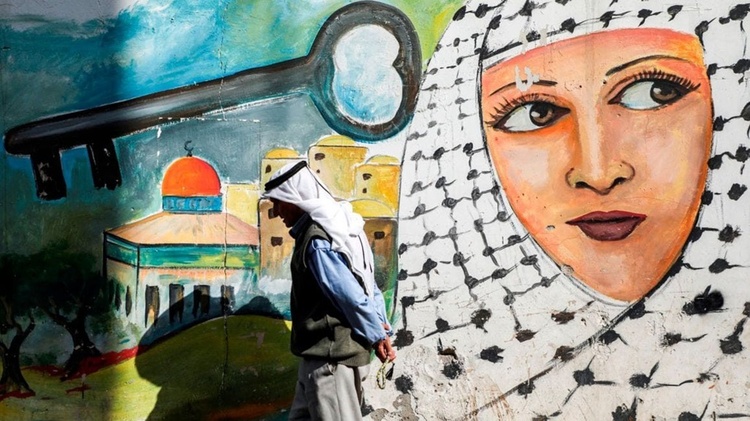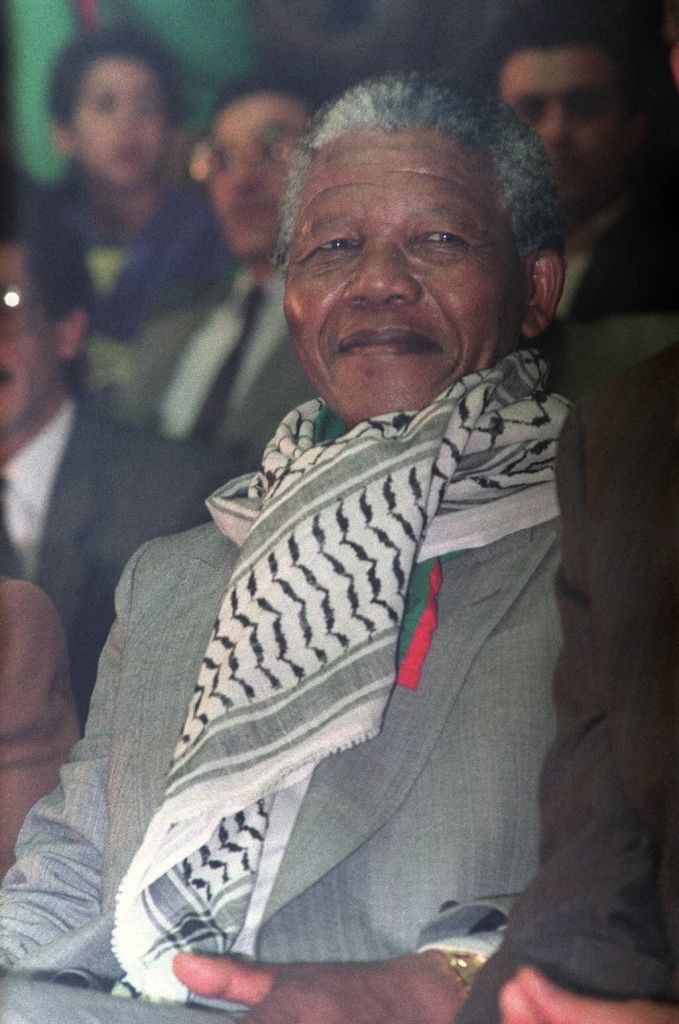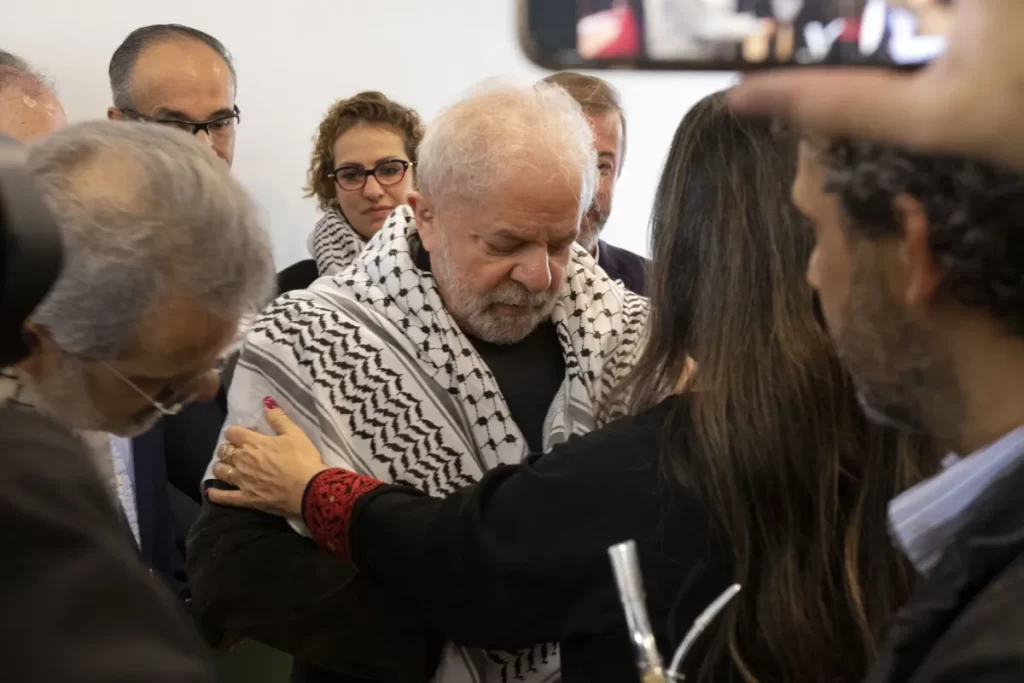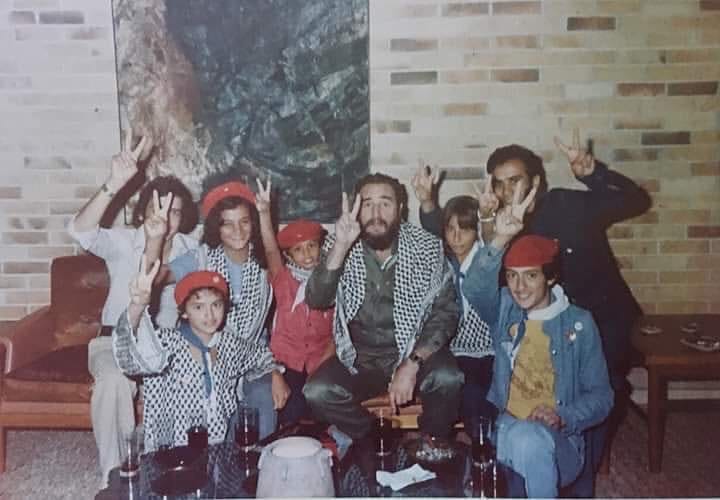
The kufiya as a symbol of resistance
The Palestinian kufiya (keffiyeh or hatta in Arabic) is a scarf with a cultural meaning rooted in the struggle and resistance of the Palestinian people, which in the last 100 years has become a political and cultural tool.
International solidarity
The Palestinian kufiya has been and continues to be a symbol of resistance and solidarity with the Palestinian people's struggle for liberation and justice. From its use during the Great Palestinian Revolution in the 1930s to its presence in current demonstrations in Palestine and around the world, the kufiya has been a key element in affirming Palestinian identity and denouncing the Israeli occupation. .





Furthermore, the use of the kufiya as a symbol of resistance has transcended Palestinian borders, becoming a global symbol of the fight against oppression and injustice.
Its use dates back centuries, although its exact origins are uncertain. Some maintain that Sumerian priests used it as a symbol of honor and social rank in ancient Mesopotamia more than 5,000 years ago.
Other sources suggest that the name Kufiya comes from an Iraqi city called Kufa, and that during a 7th century battle between Arabs and Persians in that city, the Arabs secured their turbans with cords of camel hair to identify themselves in the midst of the fighting. . After the victory, the Arabs continued to use the turban in this way.
The traditional Palestinian kufiya is made of white cotton with black pattern embroidery. There are also variations in the color palette and patterns.
The truth is that over time, its use spread throughout the Middle East and each region developed its own version of the fabric design. Traditionally, it can be recognized in red or black, with the red version being very popular in Jordan, Iraq and the Gulf countries. In Jordan and Syria, the garment is known as shemagh, while in the Gulf countries it is known as ghutra.
In Palestine, before 1930, the kufiya was worn mainly by peasants and Bedouins as protection against the sun and sandstorms, while in the cities other types of accessories were used such as the tarbush (a type of round, flattened hat with a tassel on top that was popularized by the Ottoman Empire). After the British occupation in 1930, the use of the kufiya spread to the entire population, acquiring a whole new political dimension.
During the Great Palestinian Revolution of 1936, those who first rebelled against the British Mandate were the peasants. The kufiya served to hide their faces and avoid arrest, but it also gave them away when they entered cities. The arrests and the ban on the use of the kufiya by the British authorities motivated the high command of the Palestinian Revolution to order the use of the kufiya to all men both in the cities and in the fields so that the rebels could camouflage themselves. . In this way the kufiya became popular and became a symbol of resistance and national identity.
The kufiya became a kind of uniform against the Israeli occupation. A symbol of resistance and unity in the fight for liberation.
When the Nakba, with the creation of Israel in 1948, meant the ethnic cleansing and forced displacement of hundreds of thousands of Palestinians from their lands and homes, the kufiya also represented an object of national and cultural identity to cling to.
Source

- July 11, 2025
Works by Six Latin American Artists

- July 11, 2025
IdN Magazine Volume 21, No.4 : Pattern Special

- July 11, 2025
Gallery of Posters by Daniel Warner from USA

- July 11, 2025
YEMEN


- July 10, 2025
IdN Magazine Volume 20, No. 1: Environmental Graphics




- July 10, 2025
The Evolution of Graphic Design from Ty…

- July 10, 2025
How Digital Artists Collaborate with Ar…

- July 09, 2025
The Value of Art in Education

- July 09, 2025
Art as a Reflection of Society

- July 08, 2025
The history of Bolivian art

- July 08, 2025
Protecting Art in the Age of Artificial…

- July 04, 2025
Graphic Design and Creating Iconic Bran…

- July 04, 2025
Photography as a Tool for Telling Histo…

- July 03, 2025
Painting and abstract art: differences …

- July 02, 2025
The Best Software for Digital Art and G…

- July 01, 2025
How Digital Artists Collaborate with Ar…

- July 01, 2025
Reflections of Digital Art in Different…

- June 30, 2025
Crítica de Obras Artísticas Criadas por…

- June 30, 2025
What are Plastic Arts?

- June 30, 2025
Images Against Silence: Artists Who Cha…

- June 29, 2025
History of Art Photography in the 20th …

- June 28, 2025
The 11 types of art and their meanings

- June 28, 2025
Contemporary Art is postmodern art

- June 26, 2025
Graphic Design, Art, and Technology: Wh…

- June 25, 2025
Graphic Design and Modern Content Creat…

- August 29, 2023
The history of Bolivian art

- February 19, 2024
Analysis and meaning of Van Gogh's Star…

- January 28, 2024
Culture and Art in Argentina

- September 25, 2023
What is the importance of art in human …

- September 23, 2023
What is paint?

- August 10, 2023
14 questions and answers about the art …

- August 30, 2023
First artistic manifestations

- August 23, 2023
The 11 types of art and their meanings

- September 23, 2023
History of painting

- January 12, 2024
10 most beautiful statues and sculpture…

- September 23, 2023
Painting characteristics

- August 16, 2023
The 15 greatest painters in art history

- April 06, 2024
History of visual arts in Ecuador

- March 26, 2024
The importance of technology in art1

- January 31, 2024
Examples of Street Art – Urban Art

- March 26, 2024
Cultural identity and its impact on art…

- January 20, 2024
What is the relationship between art an…

- April 07, 2024
Graffiti in Latin American culture

- October 21, 2023
Contemporary art after the Second World…

- August 25, 2024
A Comprehensive Analysis of the Cartoon…

- February 19, 2024
Analysis and meaning of Van Gogh's Star…

- August 13, 2023
9 Latino painters and their great contr…

- August 10, 2023
14 questions and answers about the art …

- August 29, 2023
The history of Bolivian art

- January 28, 2024
Culture and Art in Argentina

- August 23, 2023
The 11 types of art and their meanings

- November 06, 2023
5 Latin American artists and their works

- August 27, 2023
15 main works of Van Gogh

- September 23, 2023
Painting characteristics

- September 23, 2023
What is paint?

- September 25, 2023
What is the importance of art in human …

- December 18, 2023
10 iconic works by Oscar Niemeyer, geni…

- August 30, 2023
First artistic manifestations

- January 20, 2024
What is the relationship between art an…

- March 26, 2024
Cultural identity and its impact on art…

- January 12, 2024
10 most beautiful statues and sculpture…

- October 30, 2023
Characteristics of Contemporary Art

- August 22, 2023
What are Plastic Arts?

- April 16, 2024
The most important painters of Latin Am…

- August 24, 2023


